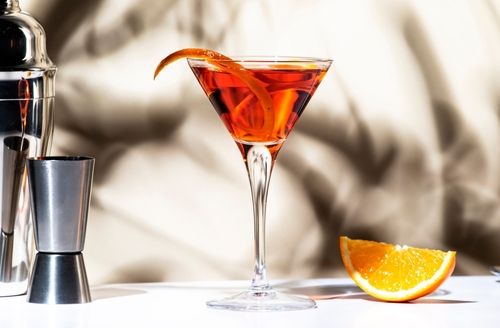
Unwrapping the History and Mystery of Christmas Beers
- Nov 24, 2023
Twenty years ago, brothers Chris and John Trogner of the newly-founded Troegs Brewing in Hershey, Pennsylvania sought to create a novel craft beer for the holiday season. Unlike traditional Christmas brews teaming with darker malts and festive spices such as cinnamon, nutmeg, clove, and cardamom, the Trogner brothers decided to incorporate their fondness for the sweet and sour taste of cherries. Also, their brewery's proximity to a local honey supplier fueled their innovative brewing endeavors.
The brothers employed Belgian yeast for its festive flavors, and left their unique concoction to ferment over a weekend. To their amazement, the fermentation was exceptionally active, leading to the unintended loss of half the batch. Nonetheless, the robust scent of cherries and yeast was intoxicating, marking the birth of their celebrated Christmas beer, The Mad Elf.
John Trogner recalls, "People loved it. It just fit that holiday celebration thing, getting friends and family together. We never could brew enough."
However, the concept of a 'Christmas beer' remains elusive. Unlike specific beer types such as American-style amber lagers or British-style imperial stouts, Christmas beers are not bound by definitive parameters. They are essentially festive tributes, often marked by experimentation, and tend to be darker, maltier, often aged in barrels, and have a relatively higher alcohol content.
Dan Becker, of The Full Pint's blog and podcast, explains, "What really separates them are the spices, the flavorings. They’re trying to capture the imagination, like – this is Christmas in a bottle.”
Several brews evoke the characteristic holiday ambiance. For instance, Bronx Brewery’s Jingle Jangle Holiday Ale exudes tones of cinnamon and vanilla, while Jubelale from Deschutes Brewery hints at toffee and dusted cocoa. Similarly, 21st Amendment Brewing's Fireside Chat is flavored with toffee, cocoa nibs, and Rogue Ales and Spirits' Santa’s Private Reserve, a stout, is garnished with tahini, tangerine, and chocolate.
However, the quintessence of Christmas beers panegyrize the season's much-adored qualities: a sense of festivity, comfort, and togetherness, combined with indulgence of the senses.
“Winter’s a huge drinking season in and of itself, but breweries go above and beyond with Christmas beers,” said Joshua Justice, marketing and social media director for Flying Saucer Draught Emporium, a Texas-based taproom operation.
In fact, the tradition of Christmas beers is a millennia-old practice, tracing its roots back to the Viking era. As their winter “Jul” celebrations evolved into Christmas festivities with the advent of Christianity, the culture of enjoying a hearty brew with loved ones was integrated naturally into the holiday tradition.
The Christmas beer season typically extends from Thanksgiving to New Year, though certain brews might appear in stores as early as Halloween, marking the beginning of holiday celebrations. As Trogner asserts, “We say, the holidays don’t start until you have your first Mad Elf.”
“Timing is the trick for producers and sellers,” said Becker. As Christmas season ends, so does the mirth associated with these seasonal brews. Consequently, brewing Christmas beers calls for strategic and intricate planning to not only capture but also maintain the market demand within the specified period.
Despite these challenges, Christmas beers offer an intriguing facet of brewing craft, stirring creativity and offering complex flavors that evolve with age. As Trogner concludes, “We work hard to make it as consistent as possible. But you can’t control Mother Nature.”






